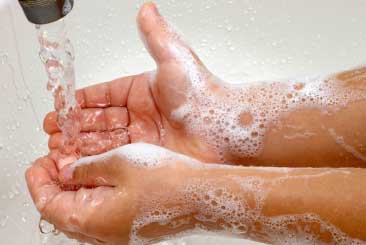|
|
| How To Develop a Water Reduction Strategy |
| By Niki Bradley |
| Published: 07/25/2016 |

Invariably, when we read tips on ways to save water, they are written for the consumer (i.e., the homeowner). While some of these tips—such as using the dishwasher only when there is a full load or watering lawns in the evening—can also apply to a correctional location, I am sure we can all agree that there is a big difference between a home, which may house 4 people, and a correctional location, which might house 2,500. However, saving water is possible in a correctional location. In fact, many such facilities, especially in California, have implemented programs that reduce water consumption dramatically. While these facilities prove it is possible to save water, doing so is very dependent on developing a water-reduction strategy. Following are some guidelines to get such a program up and running: Start at the top: The likelihood of a water-reducing program succeeding in a prison or jail is very dependent on top administrators. If they are behind the program and willing to take a leadership role in making it happen, chances are it will. Set a goal: There are actually two parts to goal setting when it comes to water. First, you have to know exactly how much water the facility uses. To do this, gather utility bills that provide this data, go back about two years, and note the average consumption. That’s now your benchmark. Then, based on the data, set a goal. Do you want to bring consumption down 10 percent? 20 percent? 30 percent? Sometimes it’s a good idea to start small and build from there. In this way, there will be more enthusiasm for taking water-reducing strategies to the next level. Determine monthly consumption: Along with determining how much water has been used in the past, start recording how much water is being consumed currently. Many administrators find that they have no idea how much water their facilities are using – in the past or today. We have to turn this around, as this knowledge is key to a water-reduction program’s success. Perform a water audit: This is the hard part, but it can be made easier if outside engineers are brought in for help. A water audit is used to determine exactly where water is being used. Typically, it is the first step in uncovering areas where water is being wasted (leaking pipes, etc.) or where consumption can be reduced. Detect leaks: As just referenced, one of the benefits of a water audit is uncovering areas where water is being wasted; typically, this means leaks. Eliminate nonessential water use: In some facilities, water is used to clean walkways, outdoor areas, or kitchen floors. Or it is frequently used to clean vehicles used by the facility. These areas need to be viewed as nonessential water use, primarily because there are other ways to clean these areas and items that require less water or no water at all. Install aerators: A correctional facility is likely to have hundreds of faucets. The simplest and most cost-effective way to reduce water consumption in water faucets is to install aerators. Federal plumbing standards now specify that faucets use no more than 2.2 gallons per minute (GPM).* That’s a lot of water. By installing an inexpensive aerator, that amount can be reduced by as much as 60 percent.** Consider landscape irrigation: Water-efficient landscape irrigation (drip system, etc.) should be installed, irrigation frequencies must be reduced, and all irrigation should take place at night, helping to minimize evaporation. These are all “big picture” items. But let’s dig deeper and discuss some specific areas within a correctional facility. These areas include inmate cells and showers and even food preparation areas. The first step to help in these areas is signage. Install signs throughout the facility asking inmates to help the facility reduce water consumption. In the “outside” world, signage has proven to be very effective; they cause most people to become much more water conscious. While the effectiveness of signage in a correctional facility can vary, at least inmates and staff will become much more aware of the need to use water responsibly. Other steps include the following:
*These standards apply to faucets in residential settings; however, faucets in commercial locations often use about the same amount of water, possibly even more if it is an older faucet. **Based on actual experience at Rochester Institute of Technology Niki Bradley is marketing manager for Waterless Co, Inc., the oldest manufacturer of no-water urinals in the United States. |
Comments:
Login to let us know what you think
MARKETPLACE search vendors | advanced search

IN CASE YOU MISSED IT
|


For more information and details about their services, you can visit their official website called the Water Treatment Orlando FL. It is so well organized that you will find everything explained in detail there. I really admire their services because they are very reliable and quick at the same time.
relevant dofollow blog commenting Great Information sharing .. I am very happy to read this article .. thanks for giving us go through info.Fantastic nice. I appreciate this post.